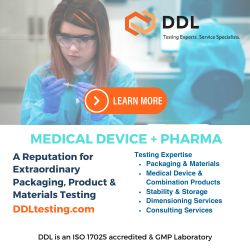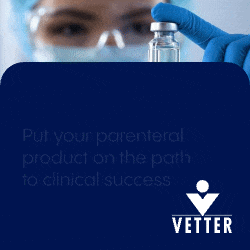EXECUTIVE INTERVIEW - Incannex Healthcare: Pioneering the Future of Cannabinoid and Psychedelic Therapies
 As global interest in psychedelic and cannabinoid-based therapies accelerates, one company stands at the intersection of scientific innovation and regulatory advancement: Incannex Healthcare Inc. (NASDAQ: IXHL). Led by CEO Joel Latham, Incannex is developing a diverse pipeline of treatments targeting some of the most challenging and underserved indications in medicine, including Obstructive Sleep Apnea, Rheumatoid Arthritis, and Generalized Anxiety Disorder. What sets Incannex apart is its commitment to rigorous clinical validation, international regulatory engagement, and a vision for multimodal drug delivery that blends emerging science with patient-focused outcomes.
As global interest in psychedelic and cannabinoid-based therapies accelerates, one company stands at the intersection of scientific innovation and regulatory advancement: Incannex Healthcare Inc. (NASDAQ: IXHL). Led by CEO Joel Latham, Incannex is developing a diverse pipeline of treatments targeting some of the most challenging and underserved indications in medicine, including Obstructive Sleep Apnea, Rheumatoid Arthritis, and Generalized Anxiety Disorder. What sets Incannex apart is its commitment to rigorous clinical validation, international regulatory engagement, and a vision for multimodal drug delivery that blends emerging science with patient-focused outcomes.
In this exclusive interview, Joel Latham shares how the company navigates complex global regulatory pathways, building strategic collaborations, and forging a path toward commercial success that balances both scientific rigor and therapeutic optimism.
Q: Can you provide a high-level overview of your company’s mission and what makes you stand out in the drug development landscape?
A: At Incannex Healthcare, our mission is to develop and commercialize innovative therapies that address persistent and underserved medical conditions. We focus on diseases where current treatments are inadequate or come with significant drawbacks, and we approach them with a science-driven, clinically rigorous strategy.
What makes us stand out is our dual focus on cannabinoid-based pharmaceuticals and psychedelic-assisted therapies. Unlike many companies in this emerging space, we’re committed to advancing our therapies through FDA and TGA-regulated clinical trials, ensuring that our treatments are not just promising, but provably effective and approvable.
We also prioritize fixed-dose combination therapies, which allow us to target complex conditions through multiple mechanisms, improve outcomes, and develop strong intellectual property. For instance, our IHL-42X program combines dronabinol and acetazolamide to treat Obstructive Sleep Apnea (OSA), an approach we believe could reshape the current standard of care.
With a seasoned team and strategic partnerships in place, we’re efficiently moving assets through the pipeline. At the end of the day, our goal is to bring forward prescription therapies that are novel, effective, and capable of making a real difference in patients’ lives.
Q: Let’s talk about IHL-42X, your lead candidate for OSA. Why is this such a compelling target, and what have you seen in clinical trials so far?
A: OSA is a massive public health issue, with it estimating to impact over a billion people globally. It disrupts sleep, increases the risk of cardiovascular disease, and significantly impacts quality of life. Yet, there are no FDA-approved pharmacological treatments. The standard of care, CPAP devices, suffer from notoriously poor compliance, and that is the gap we aim to fill with IHL-42X.
IHL-42X is a fixed-dose oral combination of acetazolamide and dronabinol, designed to reduce the Apnea-Hypopnea Index (AHI), the gold-standard measurement of OSA severity. In our Phase 2 trial, we saw significant improvements, particularly with the lowest dose, which reduced AHI by 51% on average. Importantly, 25% of participants experienced reductions of over 80%. That’s a huge signal. We’re now conducting a global Phase 2/3 trial, called RePOSA, involving patients who are either non-compliant with, or intolerant to, CPAP. We’re optimistic that IHL-42X could become the first approved pharmacotherapy for OSA.
Q: Another exciting area is your work in Rheumatoid Arthritis (RA). What is the science behind IHL-675A, and how does it differ from other anti-inflammatory drugs on the market?
A: RA is a complex autoimmune condition where inflammation plays a central role. Current treatments often don’t work for everyone and can come with significant side effects. IHL-675A is our investigational therapy that combines two active agents: hydroxychloroquine (HCQ), a long-established immune modulator, and synthetic cannabidiol (CBD), which is known to exert anti-inflammatory effects through the endocannabinoid system.
What makes this exciting is the synergistic mechanism, HCQ dampens overactive immune responses, while CBD inhibits pro-inflammatory cytokines and prostaglandins. Together, they target both immune and inflammatory pathways. Preclinical models showed substantial reductions in inflammation, and our Phase 1 data confirmed a favorable safety profile and bioequivalence. Now, we’re advancing IHL-675A into Phase 2 trials to evaluate its efficacy in RA patients. If successful, it could offer a new oral, non-opioid alternative for patients struggling with disease-modifying antirheumatic drugs.
Q: You’re also exploring psychedelic-assisted therapy for Generalized Anxiety Disorder (GAD) with PSX-001. What’s your perspective on the future of psychedelics in mental health care?
A: There’s growing recognition that traditional psychiatric drugs, especially SSRIs and benzodiazepines, aren’t working for everyone. Psychedelics like psilocybin have shown promise in helping patients “reframe” deeply rooted patterns of thought and behavior, particularly when paired with professional psychological support.
Our candidate, PSX-001, is a synthetic, oral psilocybin formulation that’s being studied in combination with psychotherapy. In our Phase 2 trial, 44% of participants experienced a clinically meaningful reduction in anxiety, at least a 50% drop in anxiety scores. That’s significant for a patient population often left behind by conventional treatments. The therapy was also well-tolerated with no serious adverse events.
What sets Incannex apart is that we’re not just conducting clinical research, we’re focused on pharmaceutical-grade manufacturing, controlled dosing, and regulatory pathways. We believe PSX-001 can become part of a validated, scalable model for psychedelic mental health treatment.
Q: Cannabinoids and psychedelics are emerging fields, but also heavily regulated. How does Incannex approach clinical development and regulatory strategy to meet FDA and international standards?
A: We’re not in the wellness or dispensary business, Incannex operates strictly as a pharmaceutical company. That means adhering to Good Manufacturing Practices (GMP), submitting Investigational New Drug (IND) applications, and conducting randomized, placebo-controlled trials.
We work closely with regulators in the U.S., Australia, and Europe to ensure our studies are designed for eventual marketing approval. Our team includes experienced regulatory professionals and advisors who’ve brought drugs to market globally. We also benefit from being based in Australia, where we can run trials more efficiently and access the FDA via Project Orbis and other international collaboration pathways.
Ultimately, our goal is to be among the first to bring cannabinoid and psychedelic drugs through traditional regulatory pipelines, with the same rigor as any small molecule or biologic.
Q: From a business perspective, how is Incannex positioning itself for long-term success? Are you exploring partnerships, licensing, or vertical integration?
A: We’re building a business with global scalability, and we recognize that partnerships will be an important part of that equation. Our priority today is to demonstrate strong clinical results and de-risk our pipeline, particularly as we approach pivotal trials and eventual New Drug Applications (NDAs). That gives us leverage for potential collaborations.
At the same time, we’ve invested in IP protection, proprietary formulations, and efficient trial execution, all of which make us attractive to larger pharmaceutical players. We’re certainly open to strategic partnerships or licensing agreements, especially as we complete later-stage trials. That said, our current focus remains on advancing our programs and generating high-quality clinical data.
We’re also exploring complementary technologies and delivery systems that could enhance patient outcomes or expand our pipeline in the future. The long-term goal is to be a category-defining leader in psychedelic and cannabinoid drug development, much like how biotech pioneers established the first wave of immunotherapies or gene therapies.
Q: How do patient perspectives shape your clinical programs, and how are you ensuring that your therapies align with their real needs?
At Incannex, patient needs are the north star guiding our development strategy. We deliberately focus on conditions where current therapies are inadequate, inaccessible, or non-existent, such as OSA, RA, and GAD, because these are the areas where patients are underserved and often overlooked by larger pharmaceutical companies.
From the earliest stages of program design, we listen to patients and clinicians to understand where current options fall short. For example, with OSA, poor adherence to CPAP machines has continued to be documented, yet the pharmaceutical industry has largely ignored it. That’s why we’re advancing IHL-42X as a potential first-in-class oral therapy, an option that better aligns with how patients want to manage their condition.
We also design our clinical trials with patient experience in mind. That means minimizing treatment burden, ensuring our protocols are tolerable, and building in meaningful endpoints, such as real-world functionality and symptom relief, not just biomarker data. In our psilocybin-assisted therapy program for GAD, the inclusion of psychological support isn’t just a regulatory requirement; it’s an essential part of helping participants feel seen, safe, and empowered.
Ultimately, we don’t just want to meet regulatory endpoints, we want to transform lives. That’s the lens through which we evaluate every program we advance.
Q: Looking ahead, what milestones should stakeholders watch for in the next 12–18 months?
A: The next year is expected to be big one for Incannex. We anticipate interim data from the ongoing global Phase 2/3 RePOSA trial for IHL-42X in OSA. In parallel, we are initiating the Phase 2 trial for IHL-675A in RA, which will help validate our unique combination therapy model. We also expect to report key clinical results from the Phase 2 trial of PSX-001 for GAD in the near future, another major catalyst for us.
On the corporate side, we’ll continue to engage with regulators and explore global licensing and commercialization strategies. If all progresses as planned, we will be well-positioned for late-stage development, strategic partnering, or even submission for marketing approval in some regions.
Overall it really is an exciting time; we believe we’re at the forefront of a shift in chronic disease treatment, and we look forward to sharing our journey with the broader scientific and investment communities.
Conclusion
As Incannex Healthcare continues to advance a robust pipeline of cannabinoid and psychedelic therapies, it is staking out a unique and disciplined path in an industry full of promise, and pitfalls. Joel Latham’s insights reflect not only the company’s scientific ambition but its commitment to regulatory rigor and patient impact. With multiple data readouts on the horizon, Incannex is a company to watch closely as the future of mental health and chronic disease treatment continues to evolve.
Total Page Views: 75















